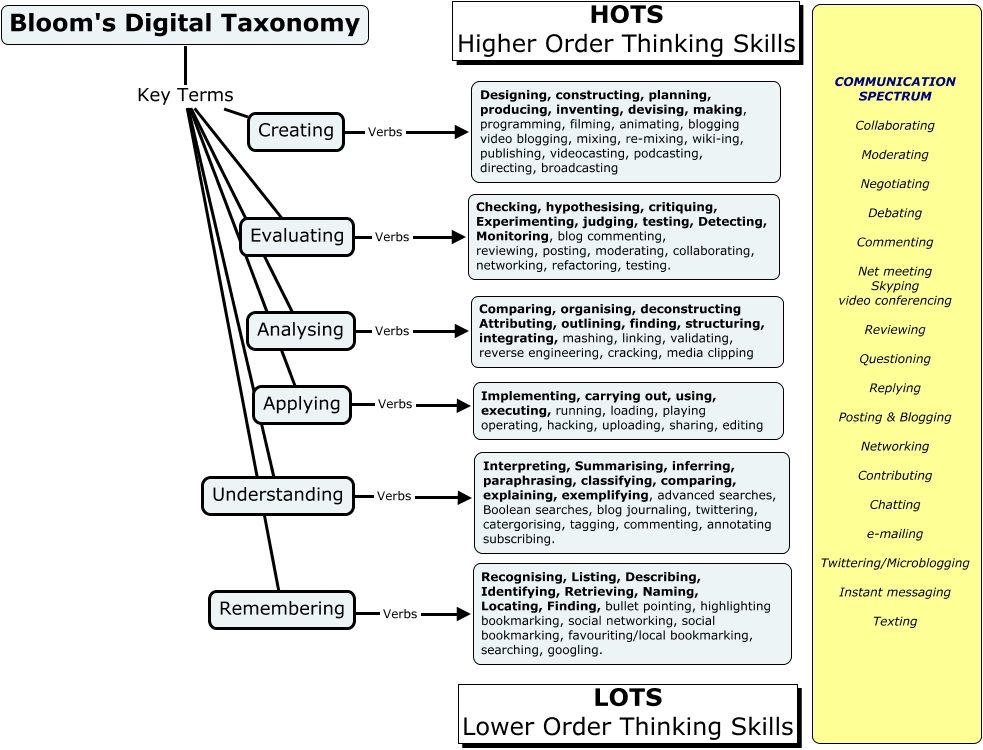
by Staff
At Teachthought, we have described Bloom’s taxonomy as “a hierarchical order of cognitive skills that can, among countless other uses, help teachers to teach and students to learn”.
Whether you conceive instructions, assess an assessment or observe a classroom, Bloom remains a powerful tool to understand how the thought occurs – and how we can better support it thanks to the intentional lesson design.
Integrate AI into bloom taxonomy
AI tools like Chatgpt reshape the way students access and interact with knowledge, but where are they part of Bloom?
The answer depends on task design. Ask Chatgpt to summarize an article aligns with Understanding. Encouraging him to generate interview issues can fall Applicationwhile using it to design a project or co-write a podcast script can reach Creation. Cognitive demand does not reside in the tool itself, but in How students should get involved with him.
This is where Bloom digital taxonomy becomes particularly useful. It aligns the traditional levels of reflection – remember, understand, apply, analyze, assess and create – with the tasks, tools and the digital media today. Initially focused on web tools now stated, this framework evolves with technological trends, helping educators to plan lessons that focus on thought rather than digital work.
Modern platforms like Chatgpt, Canva, Google Docs, Minecraft EducationAnd YouTube Authorize students to demonstrate a dynamic and creative thought thought. If they Keep resources, build presentations, collaborate on documents or co-author of the content with AIBloom’s digital taxonomy helps to make the objectives cognitive behind these visible – and more intentional activities.
Are you looking for practical verbs in class instead of tasks types? Explore our complementary list of 126 Bloom digital verbs for teaching rich in technology.
Use Bloom’s digital taxonomy in the modern class
While Bloom’s is often used to plan assessments or differentiate teaching, this version encourages teachers to also Evaluate the cognitive complexity of digital work. Do students seek and repeat themselves, or synthesize, do they design and think?
THE Communication spectrum To the right of the graph, puts more emphasizes how learners engage with others in digital spaces – from messaging and publication to more nuanced forms of collaboration.
What about AI tools like Chatgpt?
AI tools as Cat Present new challenges and opportunities when seen through Bloom’s objective.
For example, encourage ChatPPT to Summarize an article could fall under Understandingwhile asking him to generate interview questions could land in Application or even Creation—Densitization on how the output is used by the student.
The key is in the task design And how learners should interact with the tool.
A point to remember
This version of Bloom’s does not only concern technical tools for “tasks”. Instead, that (hopefully) helps educators see the Reflection requests Integrated into digital activities – Make the skills least visible in Chatppt, streaming, social sharing, podcast creation, etc.
Do you want a full list of verbs based on this frame? Discover the digital verbs of 126 Bloom for teaching rich in technology.
Need a traditional version for prices planning and evaluation? Visit the verbs of bloom taxonomy for teaching and evaluation.



